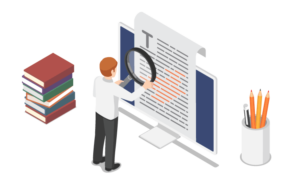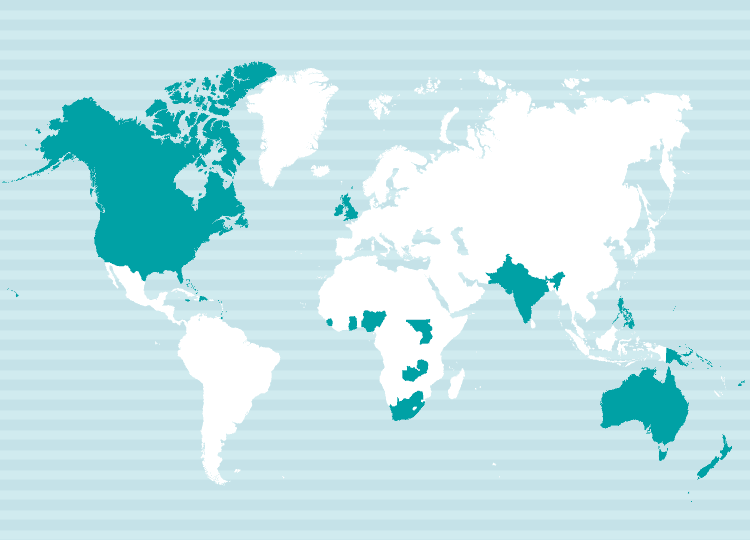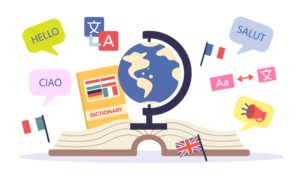Why Choose NAIway? Seamless Localization into Japanese
- The greatest advantage of partnering with NAIway Translation Service lies in our ability to deliver expert localization into Japanese from English, Chinese, and more.
- Your content is handled by experienced native Japanese translators with deep expertise in their fields, ensuring not only linguistic accuracy but also cultural relevance.
- Backed by a rigorous quality control system, we provide fast, precise Japanese translations—from English or Chinese—across highly specialized domains including business, law, IT, engineering, healthcare, tourism, and the arts.
Translation is more than simply converting words or sentences from one language to another.
It’s about fully grasping the original intent of the source text and conveying that meaning accurately—even across languages shaped by different cultures and worldviews. To truly understand a source text, one must possess not only specialized knowledge, but also a deep awareness of the country’s history, society, and current trends.
Great translation also requires a strong sense of style.
Whether you're translating a business document, a website for natural cosmetics, or a technical manual in mechanical engineering, the tone and expression must be adapted accordingly. This is where a translator’s true skill shines.
At NAIway Translation Services, our seasoned translators bring expertise across diverse fields—business, tourism, engineering, IT, law, finance, and healthcare—to provide high-quality English↔Japanese translation and proofreading. We also operate our own proprietary Quality Assurance System (QAS) to ensure each translation meets the highest standards.

For more details, please feel free to contact us.
Multilingual Translation Support
At NAIway, we offer multilingual translation services. Along with Thai, we provide translations in English, Chinese, Tagalog, Indonesian, and more—all in one place.
If you're considering inbound tourism solutions, feel free to contact us for a consultation!

NAIway's Quality Assurance System
At NAIway Translation Service, we believe that quality management is our top priority as a professional translation company. To ensure the highest standards, we have developed our own Quality Assurance System (QAS) and implement strict quality control measures.
For high-quality Japanese-Indonesian and Indonesian-Japanese translations, every document undergoes a two-step review process: after the initial translation, a second translator conducts a thorough quality check.
We meticulously review each character and sentence, ensuring logical flow, terminology consistency, and appropriate expressions to deliver a refined translation tailored to your needs.

For more details, please feel free to contact us.
Introduction to Our English Translators
Here are some of the translators currently working with or registered at NAIway.
What is the English language?
English belongs to the West Germanic branch of the Indo-European language family, alongside German and Dutch. Over the centuries, it has been shaped by a wide range of linguistic influences, most notably German and French. The foundation of modern English was established around the 17th century, based on the dialect of London.
Today, English is spoken as an official language in over 80 countries, including the United Kingdom, the United States, Canada, Australia, and New Zealand. It is used across all six continents and serves as an official language of both the United Nations (UN) and the European Union (EU). Recognized as the de facto global lingua franca, English plays a central role in foreign language education worldwide.
Broadly speaking, English can be divided into three main varieties: British English, American English, and Australian English, though numerous regional dialects also exist. In Japan, the form of English most commonly taught is American English.
Interestingly, the Japanese word for English, "英語" (eigo), uses the character "英," which is derived from the Chinese transliteration of "England"—either 英吉利 or 英格蘭.
Primary Regions of Use

Language Family: Indo-European → Germanic Branch
Regions Spoken: United Kingdom, United States, Canada, Australia, Ireland, South Africa, New Zealand, Singapore, India, the Philippines, and more
English Script
English uses the Latin alphabet. With the exception of certain loanwords, it is written entirely using the standard 26-letter alphabet, without diacritical marks.
Key Features of the English Language
What Sets English Apart: Simplicity on the Surface, Complexity Beneath
One of the defining features of English is the absence of grammatical gender in nouns and the significant erosion of inflectional endings. While many Indo-European languages—such as German, French, Spanish, and Russian—routinely inflect nouns, pronouns, articles, and adjectives according to gender, number, and case, English has largely abandoned these systems. Nouns no longer carry gender (with rare exceptions), and aside from the possessive case, grammatical case distinctions have nearly vanished. As a result, syntactic structure is now primarily conveyed through fixed word order, rather than morphological change.
Likewise, English verbs exhibit far less inflection than their counterparts in other Indo-European languages, which typically vary according to mood, voice, aspect, tense, person, and number. In English, verb forms are relatively simple; even the most irregular verb, be, has only eight forms (be, am, are, is, was, were, been, being). Functions that were once expressed through verb inflection are now handled largely through auxiliary verbs.
This loss of inflectional endings has led to another unique flexibility in English: the ability to shift word classes effortlessly. Nouns and adjectives can easily be used as verbs—for instance, smoke (to emit smoke or to smoke a cigarette). Nouns can also function adjectivally when placed before other nouns—such as in art school—and even plural nouns can modify other nouns, as seen in Boys Town.
For Japanese speakers, the lack of grammatical gender and the minimal use of inflection may make English appear simpler and more approachable than other languages. However, this surface simplicity comes at a cost: English syntax must rely heavily on a fixed word order—Subject + Verb + Object—resulting in sentence structures that are often layered and complex.
What Are English Dialects?
English Dialects Around the World
Spoken in many countries and regions, English naturally comes in a wide range of dialects shaped by geography and culture. American English, for example, is known for its rhotic pronunciation—where the “r” is rolled or strongly pronounced—while in Australian English, the vowel “a” often sounds like “ai.” But even within the same country, regional dialects can vary significantly.
Nowhere is this more evident than in England, the birthplace of the English language, where a rich variety of local dialects still thrives. One famous (and humorous) example highlights how pronunciation differences can cause confusion: in some regional accents, the word “day” sounds so different that the sentence “I’ll go to hospital today” may be misheard as “I’ll go to hospital to die.”


